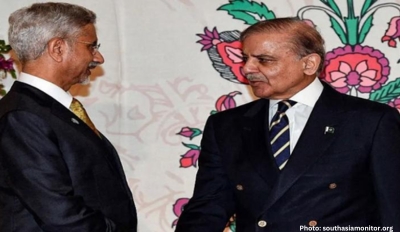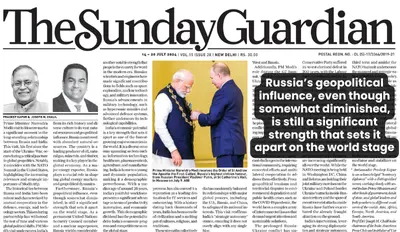There is an increasing anger among the majority of people in the country towards the American establishment, towards the mainstream American politicians and towards both the political parties. The rise and growing popularity of unconventional politicians with varied ideologies and outlook to the future of the United States in both the Republican and the Democratic Parties may be explained, to some extent due to this growing frustration among the middle class and the poor in this country.
Income inequality is one of the major global issues talked about today. It is the bane of the working class’s existence. It’s more evident in the United St6ates today than ever before. In the US, income inequality increased the most among all the developed nations – the richest 1% growing by 275%, while wages of the poor grew by only 20% in 30 years. This growing inequality has immense consequences flor the nation’s future. As the children of the rich are getting better services, and in turn, a higher likelihood of social and cognitive development, which means that they are more likely to take up the high paying executive positions than the others, whose parents were perhaps not so lucky. Unequal starting points only mean that the finishing points will be unequal as well, and it’s important that every nation needs to address this problem by giving everyone a uniform starting point, meaning that people win the race based on merit, rather than a never-ending cycle of rich breeding rich.
 Over the past four decades, the American middle class has been shrinking relative to upper- and lower-income groups, both of which represent bigger shares of the population than at any time since at least 1971, a new Pew Research Center report finds. An analysis finds that, the upper-income tier has grown the most in the financial and natural-resources industries, and among executives and managers. At the same time, the lower-income tier increased the most among retail sales workers and “operators,” a grouping of mostly blue-collar manufacturing-type jobs.
Over the past four decades, the American middle class has been shrinking relative to upper- and lower-income groups, both of which represent bigger shares of the population than at any time since at least 1971, a new Pew Research Center report finds. An analysis finds that, the upper-income tier has grown the most in the financial and natural-resources industries, and among executives and managers. At the same time, the lower-income tier increased the most among retail sales workers and “operators,” a grouping of mostly blue-collar manufacturing-type jobs.
The increased income inequality since the 1980s is due to a decreasing real minimum wage, which means, the real wages were growing slower than inflation, contributing to increase in the inequality. The Forbes 400 list of the richest Americans, states that the total net worth of those on the list in 1982, the first year the list was compiled, was $93 billion. In 2014, that number was $2.3 trillion, up 2,400%. At the same time, median household income in the United States rose only about 180%.
Both income inequality and the minimum wage have become hot-button political issues in recent years, particularly since the rise of the Fight for $15 campaign and the release of Thomas Piketty’s tome Capital in the 21st Century. Democratic presidential hopefuls Hillary Clinton and Bernie Sanders (I-Vt) talk about income inequality as a major economic problem and advocate for raising the minimum wage as one possible solution for the issue.
In this context, it’s a welcome initiative that two of the nation’s largest states – California and New York – are exploring proposals to raise the minimum wage to $15 an hour. Kim Weeden, director of the Center for the Study of Inequality at Cornell University, says while raising the minimum wage will unlikely decrease the levels of income inequality, it would make a huge difference for those struggling to make ends meet.
 Democratic presidential candidate Sen. Bernie Sanders of Vermont admitted that raising the national minimum wage to $15 an hour could cause a rise in prices but added the benefits outweigh the risks. In a Feb. 12 Medium post, Hillary Clinton wrote, “As president, I will work to raise the federal minimum wage back to the highest level it’s ever been — $12 an hour in today’s dollars — and support state and local efforts to go even further.”
Democratic presidential candidate Sen. Bernie Sanders of Vermont admitted that raising the national minimum wage to $15 an hour could cause a rise in prices but added the benefits outweigh the risks. In a Feb. 12 Medium post, Hillary Clinton wrote, “As president, I will work to raise the federal minimum wage back to the highest level it’s ever been — $12 an hour in today’s dollars — and support state and local efforts to go even further.”
However, there are those in the Republican Party and others, who think that increasing the minimum wages will not help in diminishing income inequality. According to Heritage Foundation expert James Sherk, labor economists have found no correlation between higher minimum wages and lower poverty. Raising the minimum wage simply would not reduce poverty. Sherk says, raising the minimum wage will not affect many poor families. Higher minimum wages cost some workers their jobs. Raising the minimum wage makes these entry-level jobs harder to find. That makes it harder for less skilled workers to gain the skills necessary to get ahead. And finally, the welfare state claws back raises that low-income families do receive. Low-income workers qualify for a host of means-tested federal benefits. These include food stamps, housing vouchers, Medicaid, and the Earned Income Tax Credit. As workers’ incomes rise they qualify for less and less aid—effectively an additional tax on their income.
As per other analysts, a declining minimum wage throughout the 1980s was likely not the primary reason that the income of poor people moved farther away from that of the wealthy. That means raising the minimum wage is likely not the solution to reducing inequality, though it very well might be helpful to that bottom rung of workers. America could need a higher minimum wage for the poorest workers, while also needing a different — and likely much more difficult — solution to income inequality for everyone in the 99 percent.
The exact cause of income inequality is up for debate. But many people, including Piketty, think it has to do with the returns that the already wealthy see on their holdings, causing the rich to see more and more wealth every year, even as incomes don’t budge.
 Middle income is defined as households making between two-thirds and double the median household income, which is about $42,000 to $126,000 annually in 2014 dollars for a household of three. The upper income is defined as more than twice the median, and “lower income” as less than two-thirds of it. Accordingly, at the end of the 1960s, about 61 percent of all American adults were part of the middle class. Today, only half of all Americans can consider themselves middle class, and that might have something to do with income inequality.
Middle income is defined as households making between two-thirds and double the median household income, which is about $42,000 to $126,000 annually in 2014 dollars for a household of three. The upper income is defined as more than twice the median, and “lower income” as less than two-thirds of it. Accordingly, at the end of the 1960s, about 61 percent of all American adults were part of the middle class. Today, only half of all Americans can consider themselves middle class, and that might have something to do with income inequality.
As more people fall out of the middle class and into poverty, more people are also climbing up into wealth. “Better off” households — defined by Pew as earning more than $125,608 a year or twice the “median income” — now make up more than 20 percent of the US population.
Shawn Donnan of the Financial Times says, “We’re seeing a real divergence in American society. What’s interesting about these numbers that have come out from the Pew Research Center and that we’ve built our series around is that, really, this is the broadest measure in terms of income of the American middle class out there.”
Another notable change seen in middle class America is its racial makeup. “Between 1971 and 2015, the American middle class has become less white than it used to be,” Dannon says. “It was 80 percent white in 1971, and the next biggest ethnic group was Hispanics at 11 percent, and you found 7 percent of the middle class was black. Those numbers have improved, but they probably haven’t improved as much as many of us would have thought. Today, the American middle class is 67 percent white, 15 percent Hispanic, and 11 percent black. The big winners, in terms of really surging in the middle class, have been Asian Americans, who now make up 6 percent of the American middle class.”
Though the middle class seems to be shrinking on the whole, the upper class appears to be growing. Though some Americans are working their way into the higher income brackets, many too are also slipping below the middle class threshold. “Just under half of America is sitting in the middle, and then, really, you’ve got one-fifth of America living on less than $31,000 a year — half of them below the poverty line — and then you have the fifth at the top,” Dannon says. “That lower end has continued to grow since 1971. In 1971 it was 16 percent of the population, and in 2015 it’s 20 percent of the population. It has gone up since the crisis in 2008, which clearly has played a big role in this and making everyone feel a lot more fragile.”
“The share of middle-income adults who are ages 65 and older doubled from 9 percent in 1971 to 18 percent in 2015,” the Pew study finds. But Dannon also says that many older Americans are working longer. “The fact that older people are hanging on in the workforce longer could be a result of lifestyle choices, and it could be a result of economic reality,” he says.
 According to Weeden, in inflation-adjusted terms, the real value of the minimum wage is lower today than it was at its late-1960s peak. This decline in the real value of the minimum wage, coupled with the decline in unionization and the rise of automation, accounted for much of the growth in income inequality in the 1980s. In the last 25 years, however, most of the extraordinary growth in income inequality has occurred at the top of the wage distribution, as the incomes of the top one percent and especially the top 0.1 percent pulled away from everyone else’s.
According to Weeden, in inflation-adjusted terms, the real value of the minimum wage is lower today than it was at its late-1960s peak. This decline in the real value of the minimum wage, coupled with the decline in unionization and the rise of automation, accounted for much of the growth in income inequality in the 1980s. In the last 25 years, however, most of the extraordinary growth in income inequality has occurred at the top of the wage distribution, as the incomes of the top one percent and especially the top 0.1 percent pulled away from everyone else’s.
While there is a push to increase the minimum wages, there is also a demand to increasing income taxes on top earners, and in turn giving those funds to those on the bottom. It sounds like simple math, and has an allure for many politicians and American families alike, but a new Brookings research suggests that this proposal would actually do little to reduce inequality.
Tax the rich more. It’s a popular idea on the 2016 campaign trail, but a new study says that won’t do much to dent inequality in America. Many of America’s uber rich, including billionaires Warren Buffett and Jamie Dimon, have said they would be willing to pay more in tax. Buffett has repeatedly pointed out that his overall tax rate is lower than his secretary’s. In the past, America’s top income tax rate has been as high as 91%. It was 50% as recently as the mid-1980s. The current top rate is the same as it was during President Bill Clinton’s time in office.
Bernie Sanders has proposed a “billionaire surtax” of 10% that he says would only impact the nation’s 530 billionaires. He also wants to increase the inheritance tax — what people pay when they transfer land or money to their kids — from 40% to a top rate of 55%. Donald Trump, Jeb Bush and Hillary Clinton have all proposed eliminating the “carried interest loophole” that allows many hedge fund managers to tax their investment income at a lower tax rate (20% versus 39.6%).
In a new paper from Brookings Economics Studies, Brookings Senior Fellow William G. Gale and Nonresident Seniors Fellows Melissa S. Kearney and Peter R. Orszag found that raising the top income tax rate to 50 percent would mean an additional $6,464 in taxes owed for households in the 95-99th percentiles of income and an additional $110,968 for households in the top 1 percent. Extremely wealthy households in the very top 0.1 percent could expect to experience an average income tax increase of $568,617. As per the analysis, increasing the top marginal tax rates for those in the 95th percentile and up had a “trivial effect on overall income inequality.” only lowering the gap modestly.
 So raising taxes for top earners didn’t move the needle on inequality. Re-distributing revenue from the 50 percent tax rate would result in $1,760 in additional post-tax income for households in the lowest quintile of earners. They also found that tax hikes for top earners could raise critical revenue for the federal government, and redistribution policies would still provide substantial benefits to low-income households, if not economic mobility as a whole.
So raising taxes for top earners didn’t move the needle on inequality. Re-distributing revenue from the 50 percent tax rate would result in $1,760 in additional post-tax income for households in the lowest quintile of earners. They also found that tax hikes for top earners could raise critical revenue for the federal government, and redistribution policies would still provide substantial benefits to low-income households, if not economic mobility as a whole.
The researchers also looked at what would happen if all the extra money raised from the tax hike on the rich were given to America’s poorest. Lower-income families would receive about $2,650 a year, they found. That kind of redistribution would lessen inequality a little bit more, but the country would still remain far more unequal than it was in the 1970s. The need to close the gap between the rich and the poor and according the majority poor, lower middle class and the middle class their right to thrive is a basic necessity. They need to be able to meet their daily needs and offering them resources to grow and become productive citizens rather than become a burden on the nation, means, investing in the present by raising the minimum the income, redistributing the wealth of the nation to invest in the products and services that will enhance the quality of the lives every citizen.






